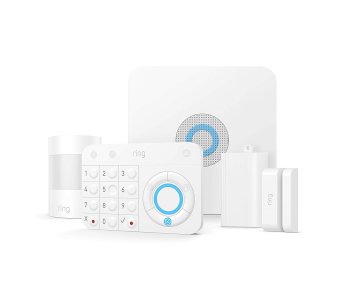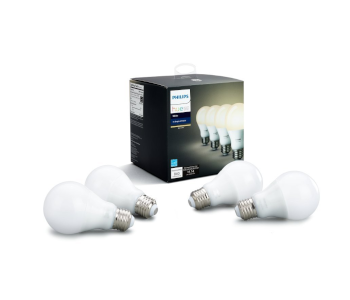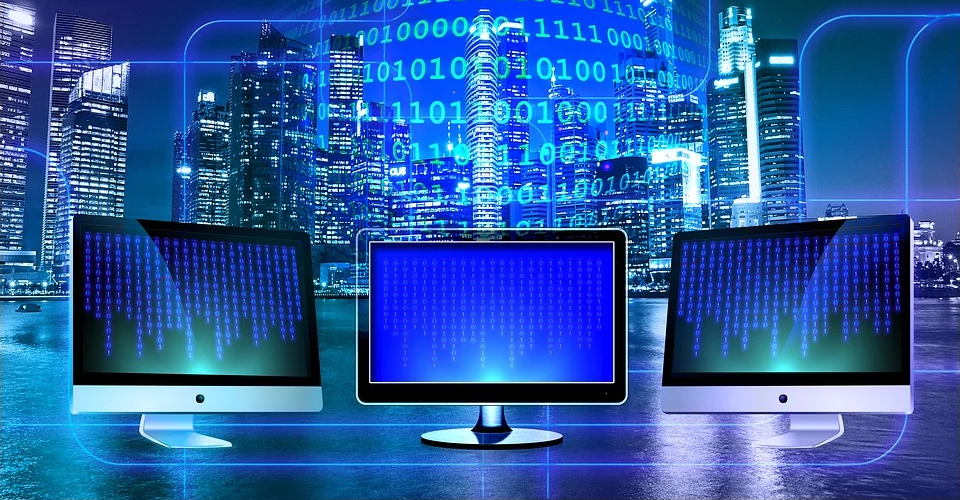The Internet of Things: Definition and Examples
Although the term “Internet of things” was coined way back in 1999, it has only been in the last decade that it has entered the common lexicon. Despite being thrown around by tech companies regularly, there is still a lot of confusion as to what the Internet of Things refers to.
What is the Internet of Things and how relevant is it in our daily lives? How much has this technology been developed? Are there any dangers inherent to IoT that we should be aware of?
What is the Internet of Things?
The Internet of Things (IoT) is actually easily defined via its name. It refers “things” or physical objects that can communicate to each other and the user using the Internet. These “things” can either have sensors that collect data or actuators that can perform actions automatically or via a remote command issued by the user.
The first demonstration of the concept of IoT was demonstrated back in 1999 at the Carnegie Mellon University using a Coca-Cola vending machine that was connected to the internet. Since then, the concept has grown and become adopted in households, commercial firms, retail and trade, healthcare, and transportation.
By combining IoT concepts with artificial intelligence, large-scale data analytics, and machine learning, we now have systems and technologies with varying degrees of autonomy. From a thermostat that pre-heats your home before you arrive to self-driving cars, IoT is gearing up to be the foundation on which our modern lifestyle will be built on.
Common examples of IoT technology
Nowadays, the examples of IoT use are virtually limitless. You probably already have IoT devices within a few feet of your right now. To get us excited about the further potential of IoT, let us look at some of the more futurists and innovative IoT applications.
Air quality monitoring
Does your home feel too humid or cause your allergies to flare up? There might be something wrong with your central air system. With a smart air quality monitor, you can help collect data that can be useful for an HVAC professional to make the necessary repairs.
TZOA is at the forefront of this field. With their Haven Central Air Monitor and Central Air Collector products, homeowners can automate their HVAC systems according to real-time air quality parameters. Data collected by the sensors can also help HVAC professionals diagnose any problems with central forced air systems.
The vision is for this technology to eventually be used to monitor air pollution levels in cities. With enough devices, crowdsourced air quality data can be a huge help for environmentalists and researchers who are looking for ways to improve air quality for the welfare of the greater public.
Home security systems

The home security market has proven to be one of the most fertile grounds for the development of IoT technology. Large companies like Ring, Nest, Arlo have dominated this scene but there are likely dozens of lesser-known brands who have their significant piece of the pie.
Smart home security systems are composed of different security devices that can connect to the Internet. Through IoT, users can control and monitor the devices remotely. This has become ideal for people who are always away or going on vacations, as they can still keep an eye on their homes even while they are away.
From motion detectors to two-way communication devices, today’s smart security systems are more advanced than ever. With cloud storage, security cameras can record several hours’ worth of videos that users can access from anywhere. This kind of security technology, typically accessible only to corporations, has gotten a lot more affordable in the last couple of years.
Wearable activity trackers
If you wear a fitness tracker or smartwatch, then you have an IoT device right on your wrist. Fitness trackers use a range of sensors to help monitor exercise performance and vital signs such as pulse rate and sleep quality.
All this data is typically collected and uploaded to the cloud, which the user can then access via phone or computer. Fitness trackers have helped millions of people improve their physical well-being by providing a convenient and accurate means of keeping track of fitness goals.
Taking this to the next level are smartwatches with built-in fitness tracking features. Not only can you keep track of your fitness goals, but you also have a more convenient way of accessing your smartphone features. With a smartwatch, you can check for text messages, e-mails, and upcoming appointments. Some smartwatches can even install apps like Uber or Spotify.
Smart lighting systems

One of the more fun ways to make your home a “smart” home is by installing smart lighting systems. The Philips Hue line is undoubtedly the most prominent brand in this market, but there are also several dozen other options.
A smart lighting system consists of several IoT-enabled lighting devices. Through an Internet connection, these lights can be controlled with just your smartphone and set to specific schedules.
Do you want your lights to turn on the moment you come in? Just set them to activate automatically once your phone is within range of your home Wi-Fi network. You can also set them to change into a warmer color when it’s late at night to help you prepare for sleep.
With a variety of light bulbs, light strips, desktop lamps, and outdoor lights, a smart lighting system will completely change the way that you think about home lighting. No longer do you need to put up with that boring old white lightbulb for several months.
Corporate asset tracking
On the corporate side of things, IoT can also be used to optimize or enhance daily commercial activities. Asset tracking is not specific to any single industry. It is mostly useful for logistics or any other company that involves regularly moving assets. However, manufacturing companies, universities, and hospitals can also benefit from this technology.
Through IoT-aided asset tracking, the location and movement of all assets can be automated or monitored remotely. Eliminating the need for human intervention vastly speeds up this process and makes tracking possible several thousand assets almost instantly.
Asset tracking using IoT has now become a lot more affordable with inexpensive sensors, although providing Internet connectivity in all relevant facilities can still be challenging.
A noteworthy example of the use of IoT in asset tracking is the use of robots to speed up order fulfillment in Amazon warehouses. Through sensors and zip codes, these robots know exactly which bundle of packages to pick up and where to drop them off.
The dangers of IoT
The unwritten rule for every single device that is connected to the Internet is that it can be hacked. This is particularly concerning when it comes to IoT devices. With enough malicious intent, strangers can hack into our home security systems to see inside our homes or into our activity trackers to know exactly where we are.
This potential for insidious surveillance is one of the biggest dangers of our increasing dependence on IoT technology. Aside from the danger of hacking, personal data will inevitably be collected from these devices. A smart fridge may sound great, but what if it keeps track of your eating patterns and targets you with advertisements whenever it thinks you’re hungry?
What makes compromised IoT devices very problematic is that hackers can also gain access to physical devices. In 2018, a Nest cam baby monitor was hacked in what was a very high-profile incident. What was unsettling about this event was that the hacker was able to talk through the baby monitor and supposedly said a few sexual expletives.
If that incident happened, then it’s not unreasonable to think of the possibility of hackers taking control of self-driving cars or messing up corporate logistics networks. This stresses the importance of developing more secure network protocols as IoT devices become more common.
Aside from issues of security, another huge challenge is how the large databases can be reconciled and put to good use. With so many IoT devices in the market today, the data has become fragmented across several different platforms. There’s also the matter of storage, as there is only a finite space to store a rapidly growing database generated by IoT devices.
Ultimately, the success of IoT will depend on how far we are willing to let technology dictate our everyday lives for the sake of convenience. After all, the concept of personal data being collected and leveraged is no longer new for most people today.
Final thoughts
Whether we are aware of it or not, IoT technology and devices have already started to shape our daily lives. Nowadays, navigating to your friend’s place is just a matter of searching for the address and letting an app do the work for you. We check our emails and message a hundred or more times a day. Even an average household likely has a few wireless devices that provide convenience.
However, we must also recognize that living in a “connected” world carries with it a lot of risks. Whenever you buy an IoT device, check for the brand’s reputation and make sure that the device is secure. This sense of online security is simply something we will need to embrace and develop moving forward.

